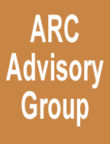
Visit Our Sponsors |
|
|
|
|
|
|
|
|
|
|
|
|
|
|
|
|
|
|
|
|
|
|
|
|
|
|
|
|
|
|
|
|
|
|
|
|
|
|

Last November, at The Logistics & Supply Chain Forum organized by Richmond Events, I conducted workshops on selecting a Transportation Management System (TMS). Forty-five logistics executives attended, yet another indication of the ongoing interest and demand that exists for TMS. Of all the topics I talked about during the workshop, Software-as-a-Service (SaaS) generated the most interest and questions.
This surprised me a bit, considering all of the reports, articles, and webcasts done on this topic by analysts and the media over the past few years. It could be that many of the executives in the workshop weren't looking for a TMS in the past, so they didn't pay much attention to SaaS back then. But now that they're looking to implement a TMS, or upgrade their existing solution, they want to get all the details. At least that's the explanation I'm choosing to believe, because the other reasons are too depressing to think about.
So, here are the five most common questions I get about SaaS, along with my answers. The information presented is by no means comprehensive, but it's enough to make you look smart at the next team meeting.
What is Software-as-a-Service? The most basic definition: software that is not installed on any computer or server located at your company, but is accessed from a third party via the Internet. Things get a little muddied from here, as other terms such as "hosted," "On Demand," and "ASP" are used synonymously with SaaS. But all these terms don't necessarily refer to the same thing.
In general, "hosted" and "ASP" (Application Service Provider) imply each company gets its own instance of the software application and associated hardware. It's like traditional IT outsourcing, where a company's IT environment is simply transferred to, and managed by, a third party. SaaS and On Demand, on the other hand, generally imply a multi-tenant model, where multiple companies share a single instance of the software application and associated hardware and infrastructure. SaaS applications have to be specifically architected to operate in this model (most legacy applications were not developed for multi-tenant use).
How are SaaS solutions priced? Pricing models are still a work in progress. The most common model is a 1 to 3 year subscription with monthly payments (implementation services are typically paid separately upfront). The subscription fee is based on several factors, including number of users, number of locations, number of modules, and transaction volumes. What is a transaction? Good question. There's no standard answer, but it's generally linked to freight volume.
Simply stated, SaaS does not imply a single pricing model. The best thing to say is that many software vendors now provide a spectrum of payment options, from upfront license fees to payments-per-transaction.
Are SaaS solutions only for small or midsize companies? That's what most vendors and analysts thought initially, but the early adopters have generally been large companies. Whenever I ask companies why they chose a SaaS solution, the most common answer I receive is this: "I needed to implement a TMS as soon as possible, but my IT team was overwhelmed with an ERP implementation, and I couldn't wait two years for them to support me."
Not having to beg the CFO for capital budget is the second most common answer. In short, logistics still remains at the bottom of the priority list when it comes to capital allocation and IT resources; SaaS is a way around this problem.
What are the benefits and drawbacks of SaaS? This is not an easy question to answer succinctly, but here are the main points you should know.
First, I don't believe the SaaS model is a good fit for all software categories. SaaS makes the most sense for business processes that are inherently network centric--i.e., processes that involve extensive communication and collaboration between many different trading partners, such as suppliers, customers, carriers, logistics service providers, and customs agencies. Transportation fits this requirement perfectly; so does global trade management.
Second, a SaaS solution creates a connectivity network, so companies can interface with all of their trading partners via a single connection to the network, instead of establishing one-to-one connections with hundreds or thousands of trading partners.
Finally, SaaS solutions are a good fit for processes that are generally standard across companies and industries. While most SaaS solutions are configurable, there's a limit to how far you can deviate from standard practices. If your company has workflows that are "way out of the ordinary," a SaaS solution may not be the best option.
Do all software vendors offer SaaS solutions? Not, but they're all heading in that direction, including the large enterprise vendors. Last year we conducted a survey of 28 leading TMS vendors and 60 percent of them expect subscription and transaction fees (a proxy for SaaS deployment) to grow significantly faster than license fees over the next five years. It's important to note, however, that the transition to a SaaS model won't be easy for many traditional software vendors. Simply put, selling and managing a service is completely different than selling and supporting a product. You can quickly tell which vendors understand the model and which don't by comparing the details (or lack thereof) of their service level agreements.
http://www.arcweb.com
RELATED CONTENT
RELATED VIDEOS
Timely, incisive articles delivered directly to your inbox.

